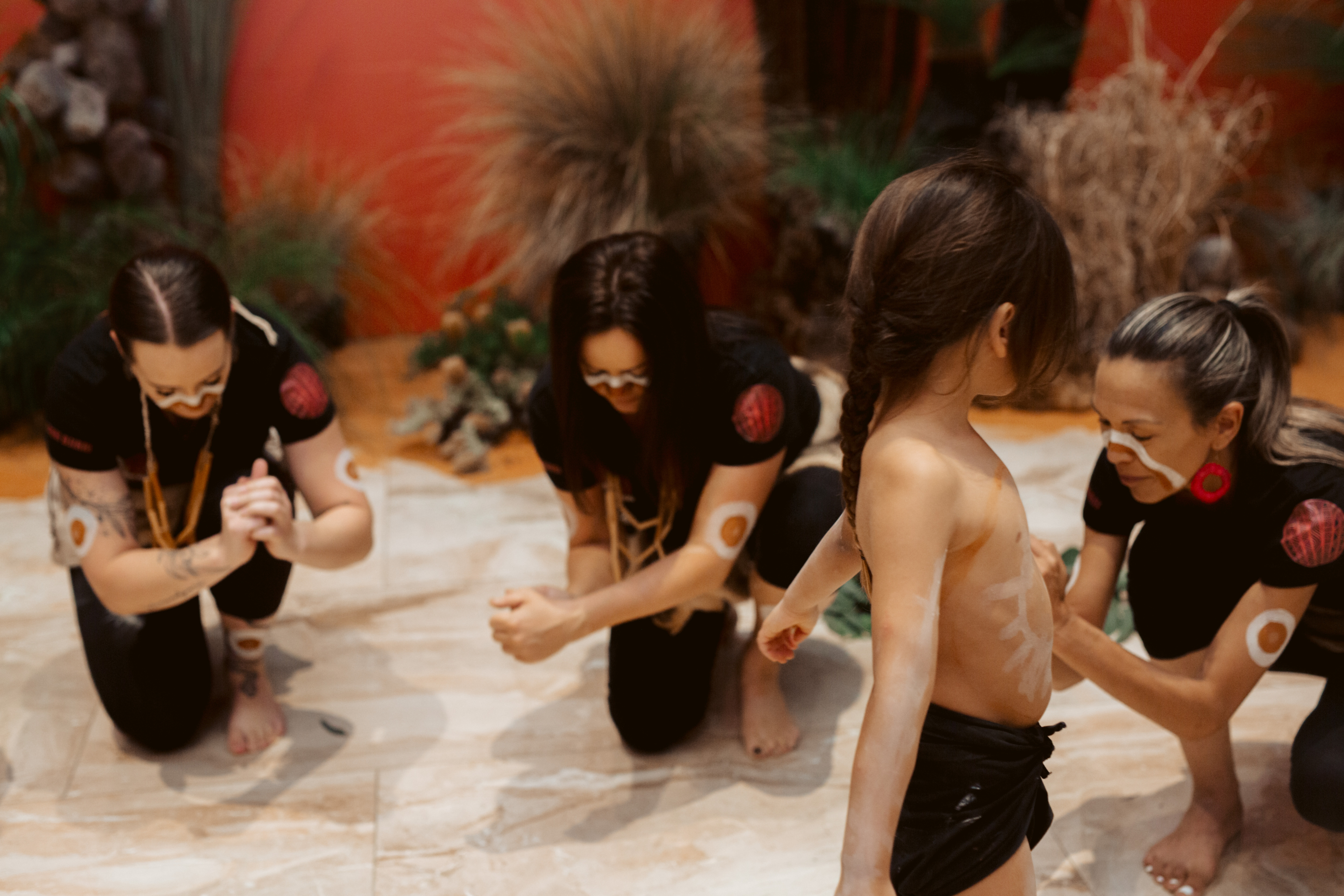
Djirri Djirri
Djirri Djirri // June 2024
Djirri Djirri
We yarned with the Wurundjeri, Dja Dja Wurrung and Ngurai-Illum Wurrung woman behind the 101 Collins Soundscape, WOMEN NGAGA BIIK.

Stacie Piper is a Wurundjeri, Dja Dja Wurrung and Ngurai-Illum Wurrung woman, Djirri Djirri dancer, and the First Nations Curator at the Victorian Indigenous Research Centre (State Library Victoria) and Creative Hub Manager for the Victorian First Peoples Art and Design Fair. Stacie’s care for community, Country and kin is as unwavering as her dedication to keeping stories strong. Stacie is the storyteller behind the 101 Collins Soundscape, WOMEN NGAGA BIIK.
We yarned with Stacie about Wurundjeri Country (the Country where the 101 Collins building is located), the importance of ceremony and the Djirri Djirri dance group she is part of.
1. Tell us a little bit about Wurundjeri Country and your connection to this place.
My connection to Wurundjeri Country is very much who I am. The connection of our family here on Country is, luckily, unsevered, even though it has been filled with much oppression, dispossession, loss and trauma. Country remains a place of strength and wellbeing for us as custodians. Particularly for me, the mountain and river Country under the big gum trees is where I feel at my best. As William/Beruk once said, “You got to know your home. My home is on the Yarra on the mountain”.
Our songlines traverse Narrm/Melbourne urban and rural lands as well as waterways. Wurundjeri Country includes the inner city of Melbourne extending north of the Great Dividing Range, east to Mount Baw Baw, south to Mordialloc Creek and west to the Werribee River, and we are the ‘legal’ protectors of the Birrarung, Yarra River.
2. What does Djirri Djirri mean?
Djirri Djirri is the willie wagtail – a little black bird with a white fantail, and little white stripes on its face. That’s what the ochre we paint up on our face represents when we’re dancing.
In our culture, the willie wagtail is the spirit messenger and inspires us to keep dancing and singing.
3. When and how did the Djirri Djirri Dancers start?
Our people have always been dancing. We never stopped. However there is a Wurundjeri ceremony called murrum turruk-urruk that hadn't taken place in over 185 years. It’s a women’s ceremony and we are now in the 11th year of practising this ceremony after reawakening, remembering and reclaiming it. In this ceremony, we also Welcome babies to Country, collect reeds and make necklaces and other adornments, make emu feather skirts for young girls, possum skin belts for the girls who come of age, and dance and sing Country passing on our cultural values and Lore.
4. What’s your favourite thing about being part of the Djirri Djirri dancers?
Dancing is my favourite part! I have always loved dancing – it's my second language. I also love mentoring and supporting girls and women to go through ceremony as I have done. I have been singing more and more, and am super passionate about waking up our drumming practices. In the 101 Collins Soundscape, I play the kangaroo/maram drum, and am developing this practice further which is really exciting.
5. What are some of your highlights as a dance group?
For me, when we opened for the Temper Trip for their 10-year reunion at The Forum! I managed to get that gig by sneaking backstage at The Pleasure Garden Festival on Bunurong Country. I snuck backstage and found their tent, met the lead singer Doug and told him about our Wurundjeri family and dance group. He said, “You gotta meet Johnny! He’s our bass player and manager, and he would be stoked to meet you.” That night I gave a feather from my headband to Johnny and he took it back to Brooklyn and hung it in his loungeroom. We kept in touch and one day Johnny called me from Brooklyn and said their having their 10-year tour at The Forum and would love for the Djirri Djirri dancers to open for them. Massive highlight! We are looking to collaborate on a song with other First Nations singers in languages from around the country.
Another major highlight would have been Tanderrum, a coming together of the Kulin Nations at Federation Square. Five mobs – Wurundjeri, Bunurong, Dja Dja Wurrung, Wathuarong, Taungurung – all danced in a spectacle of song and dance with the public all a part of it. It is something I’d love to see happen again.
As a collective we get to dance in so many different spaces – on so many stages, whether at concerts or community events. We love our culture and to be able to share it and our values, to be visible in this modern world, is the ultimate.
6. What do you hope for the future?
I hope to see more ceremonies, more songs and more dances in spaces where mob can heal and connect. Especially our kids in out-of-home care and our vulnerable Elders who are still affected by trauma here.
7. What can people do to help amplify First Nations voices and stories?
It’s important to build relationships with First Nations organisations like Common Ground to help support connections with Elders, artists, storytellers, representatives and custodians. This will mean authentic narratives are always presented. Consult with First Nations people on all matters that concern us.
Written by Common Ground in partnership with 101 Collins.
More than an iconic Melbourne landmark, 101 Collins Street is where influential businesses exchange exceptional ideas.